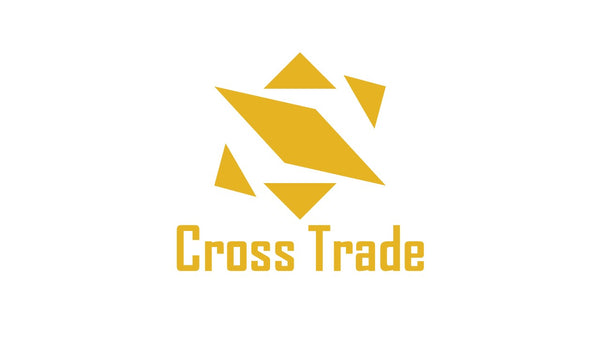Kipato Unbranded
Kipato is a social enterprise founded in 2015 that creates unique jewelry designs and collaborates with local artists.
Through its activities, it promotes the skills and talents of artists and helps them enter high-quality markets both domestically and internationally.

KIPAT is a collaboration between five young women with a wide range of skills and experience in marketing, branding, design and law. KIPAT's vision and mission is to empower artists to improve their lives, using their talent, skills and creativity on a platform where they can earn a fair wage, to transform not only themselves but their communities.
Therefore, KIPAT aims to be an ethical organisation that provides opportunities for artists and empowers them to become job creators in the local area through training of apprentice artists, primarily young people.
Introducing Kipato's Artists
The purpose and social impact of KIPAT's activities
KIPAT's mission is to help artists improve their lives by using their jewelry-making skills and talents to engage in meaningful work.
Coincidentally, most of these artists live in informal settlements such as Kibera slum.
KIPAT's impact on its direct beneficiaries also directly contributes to SDG 1 on poverty reduction, SDG 2 on zero hunger, SDG 3 on good health and well-being, SDG 4 on quality education, as well as SDG 8 which focuses on decent work and economic growth and SDG 10 which addresses inequalities.
Additionally, by using recycled materials in the production of some of its jewellery, Kipato can be considered a positive contributor to environmental conservation and health.
These impacts have largely gone unquantified until now, but this evaluation brings into focus the direct and spillover socio-economic impacts that KIPAT has on its beneficiaries.
The study identified the range of impacts that artisans can gain through their involvement with Kipato in terms of lifestyle, health and quality of life.
KIPAT items available here
The effectiveness of KIPAT's activities (survey results)
Impact on lifestyle and quality of life
A total of 49 direct beneficiaries and 182 indirect beneficiaries were surveyed, for a total of 231 respondents.
The participants were distributed across Rongai, Dagoretti and Kibera.The main activities performed by artisans included polishing/smoothing (79%), sizing/cutting (77%), heating/shaping (56%) and trading raw materials (58%).
These activities vary depending on the products produced in each workshop. Jewelry produced in Kibera included Twig necklaces, Twig earrings, Twig rings, Blueberry earrings, and Pallete necklaces.
Meanwhile, Dagoretti produced long ballroom earrings, half moon necklaces, vertex necklaces, African necklaces, studs and bracelets, while Rongai produced coco bangles, caramel cuffs, zohari studs and zohari necklaces.
It is undeniable that Kipato has a significant impact on the income levels of artisans.
Working at KIPAT increases an employee's average monthly salary by 13,500 Kenyan shillings ($135), from 9,246 Kenyan shillings ($92) before joining KIPAT to 21,521 Kenyan shillings ($215) after joining.
The income earned is used to pay for rent, food, clothing, water, electricity, school fees, etc. Reliable access to these basic needs improves the quality of life for artisans and their dependents.
When I reviewed my standard of living before and after joining KIPAT, I found that my quality of life had changed significantly.
For example, the number of artisans living in mud-walled houses decreased from 17% to 8%, and the number of artisans living in tin-walled houses decreased from 44% to 19%, but after joining KIPAT, the number of artisans living in brick-walled houses increased significantly from 40% to 73%.
In terms of food security and nutrition, more households can now afford to buy milk, with the proportion of households purchasing it increasing from 42% to 81%, and average weekly consumption increasing from 2.67 litres to 5.42 litres.
These improvements were also seen in the consumption of sugar and meat products. Before joining KIPAT, 75% of artisans used candles as their main source of lighting and 63% had electricity; candle use has now decreased to 65% and access to electricity has improved to 100% due to the increased income from KIPAT. This has had a significant impact on households.
There was also a significant change in cooking fuel choice, with only 4.4% of artisan households using cooking gas before KIPAT, but this jumped to 86% after KIPAT. This significant increase was coupled with a decrease in the use of firewood (from 56.1% to 4.5%) and kerosene stoves (from 57% to 6.7%).
In this way, increased income has enabled beneficiaries to shift to cleaner cooking energy sources.
Health effects
They tend to consciously choose better-equipped medical facilities.
In particular, before joining KIPAT, 71% of beneficiaries used the clinic, but after joining KIPAT, this number dropped to 48%.
Additionally, the use of public health centers also showed a slight decrease, from 65% before joining the company to 57.8% after joining. On the other hand, the rate of use of local referral hospitals increased from 40.6% before joining KIPAT to 77.8% after joining, and the use of national hospitals also increased from 1.1% to 32.8%.
Furthermore, before joining KIPAT, only 1.7% of beneficiaries had access to private hospitals, but after joining KIPAT, 80% of beneficiaries were able to access private hospitals.
From the above analysis, it can be seen that KIPAT has brought significant socio-economic benefits to its direct and indirect beneficiaries.
It also has a positive impact on the environment, as it reduces the amount of firewood used and uses recycled materials such as antlers and bones that would otherwise pollute the environment.
This evaluation has provided an opportunity for self-reflection and frank criticism of KIPAT's operations and their impact.
Valuable feedback and lessons learned were gained, helping us set new goals and timelines for improvements in the next innovation phase.

